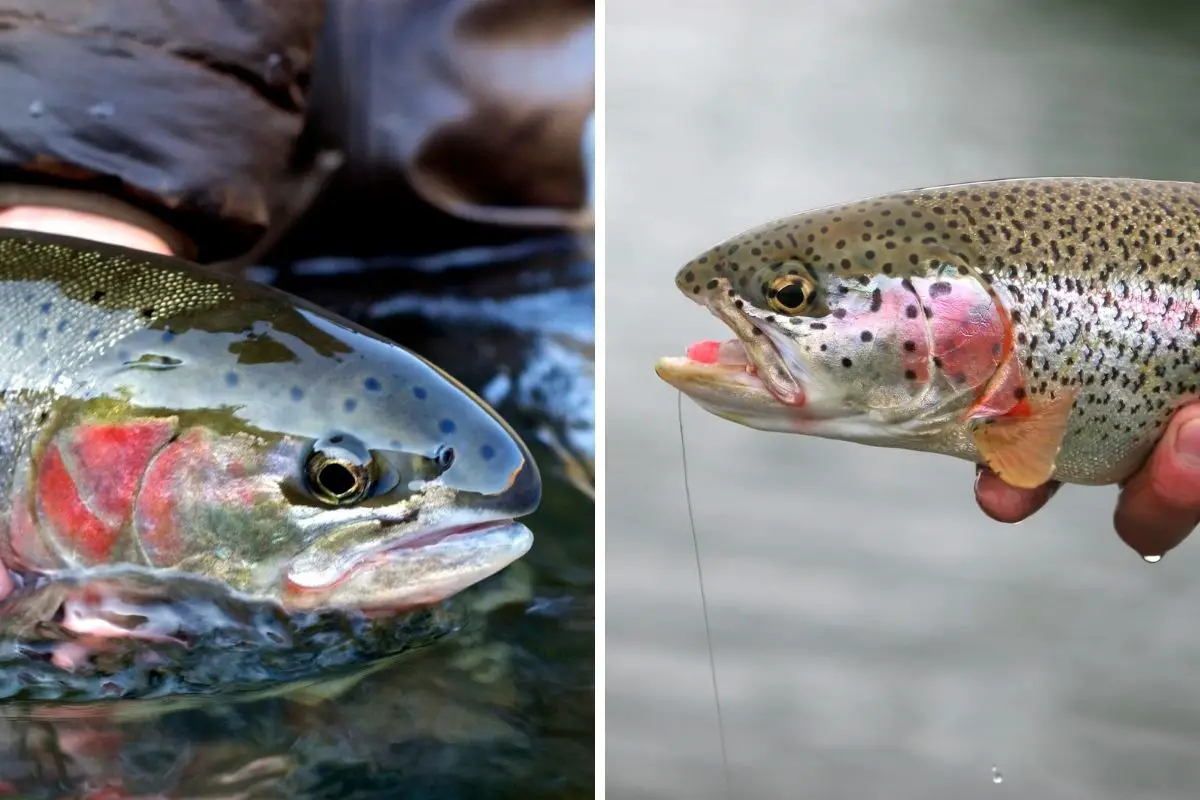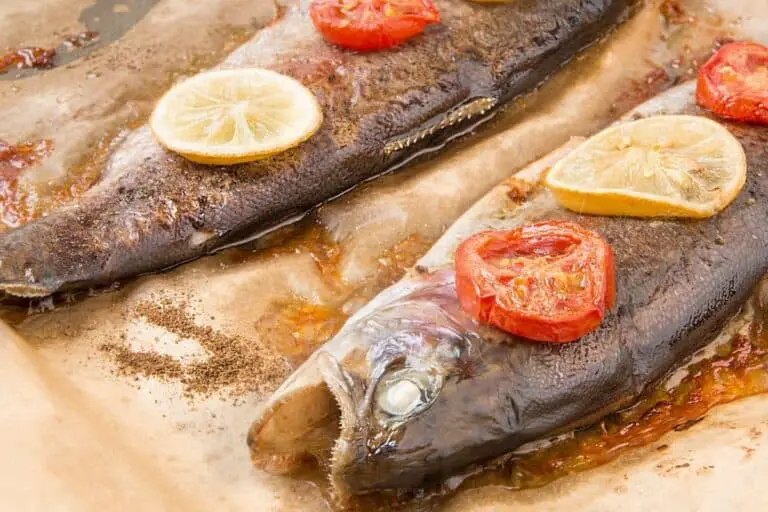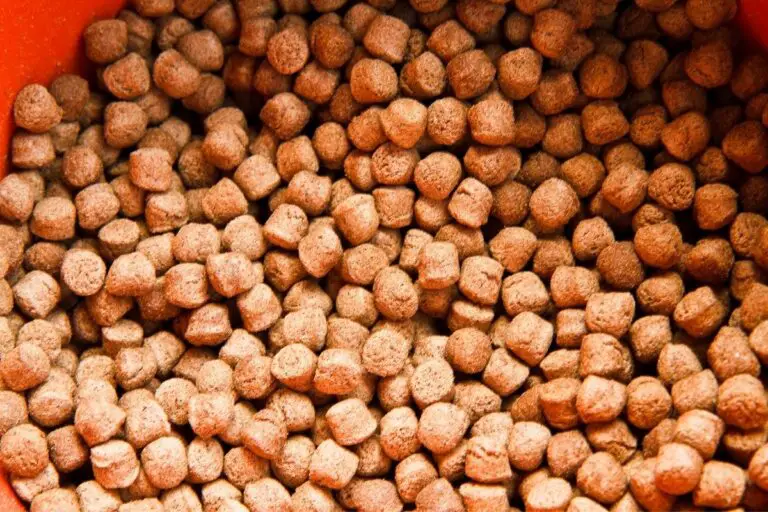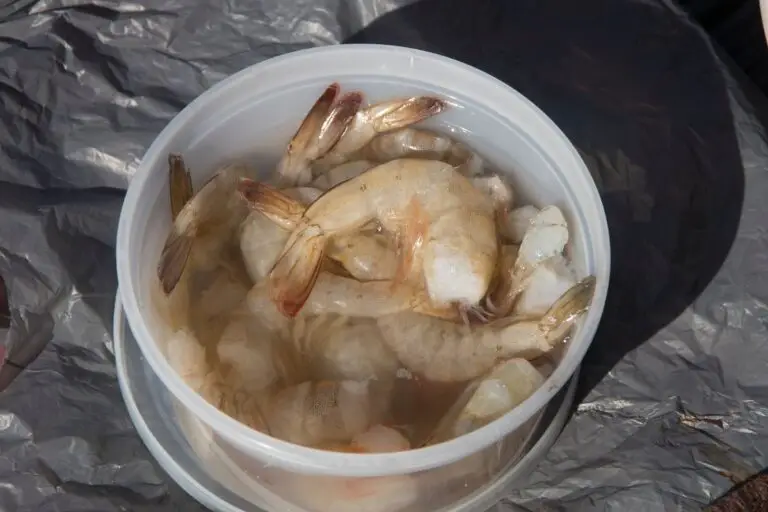Steelhead Vs Rainbow Trout – Differences and How to Target Each
Steelhead and Rainbow Trout are basically the same species but they have very different lifestyles.
It’s important that anglers understand the difference in lifestyle between steelhead and rainbow trout as this can have a significant impact on how to catch them.
So, what’s the difference between a steelhead and a rainbow trout? The main difference between a steelhead and a rainbow trout is that a steelhead starts its life in freshwater then moves to saltwater as it grows while a rainbow trout will remain in freshwater all its life. There are also some minor differences in their size, color, and physical features.
Keep reading to learn more about the lifecycle of steelhead and rainbow trout, how to tell them apart, and how to catch them.
Table of Contents
The Lifecycle of Steelhead and Rainbow Trout

Both steelhead and rainbow trout start out their lifecycle the same way. They’re hatched in freshwaters such as in creeks, streams, rivers, or lakes.
When steelhead reaches a particular stage of growth, usually at 1-2 years of age, they start to migrate to saltwater seas where they spend the rest of their lives. While rainbow trout remain in freshwater for the rest of their lives.
Scientists have explained the reason for this change in behavior which is that the steelhead’s genes trigger a metamorphosis in the cells of their bodies that allows them to survive in a saltwater environment. This metamorphosis does not happen to rainbow trout.
Once the Steelhead are at sea, they will start feeding on saltwater prey while the other Rainbow Trout that remained behind in the river, will continue feeding on freshwater prey.
After steelhead spends some time out in saltwater, they will return to freshwater where they were born for their spawning season and thus creating the next generation.
How to Tell Steelhead and Rainbow Apart?
Aside from the differences in the lifecycle, steelhead and rainbow trout have some other differences in size, color, physical features that can help you tell them apart.
Let’s take break down these differences in more detail:
Size
Steelheads are typically much larger than rainbow trout. Most rainbow trout are about 12-20 inches in length. Steelhead, on the other hand, can grow to become over 26 inches in length.
Markings and Coloration
Both Steelhead and Rainbow trout are silver and pink colored. However, Steelheads are brighter and they have more spots on their bodies than rainbow trout. Steelheads also have a reddish stripe that runs down the length of their bodies.
Physical Features
A significant physical feature that male steelhead have is a kype which is basically a hook shape they develop in their lower jaws during their spawning period.
Another significant physical feature is that a rainbow trout’s nose tends to be more rounded and blunt than that of a steelhead
What Do Steelhead and Rainbow Trout Eat?
Steelhead and rainbow trout have different diets which impact their size as well as the quality of their meat.
The main reason why steelheads are larger in size than rainbow trout is that they feed on saltwater prey including herring, sardines, and crustaceans such as squid, crab, and shrimp. I actually have a full guide to fishing trout with shrimp here that you will find quite helpful.
Rainbow trout, on the other hand, tend to feed on aquatic insects including midges, caddisflies, dragonflies, mayflies, as well as aquatic larvae.
As they grow, the rainbow trout’s diet will become more varied and they will start feeding on small baitfish such as crawfish, minnows, shiners, sunfish, and gobies. They also might feed on crustaceans and worms in some occasions.
How to Catch Steelhead and Rainbow Trout?
In order to successfully catch steelhead and rainbow trout, you first need to know where to find them, the best time to target them, and the right kind of gear to use.
Let’s break down all of these points in more detail.
Where to Find Steelhead and Rainbow Trout?
Both steelhead and rainbow fish are native to North America. You can find both species in such as in creeks, streams, rivers, or lakes during the early stage of their lives.
If you’re targeting mature steelheads, you will find them in saltwater bodies near the coastline of the Pacific Ocean.
What Is the Best Time to Target Steelhead and Rainbow Trout?
You can catch both steelhead and rainbow trout all year round. However, the best time to target them is when the weather is comfortable enough for them to feed which is usually during late spring or fall when the water temperature is between 34 and 67 degrees.
The best times of day to target trout are early morning from dawn until about 2 hours after sunrise and late afternoon from about 3 hours before sunset until dusk.
During these times, the temperature will be most ideal for them to feed so, their activity will increase and they will be more likely to bite.
What Kind of Gear to Use When Fishing for Steelhead and Rainbow Trout?

You need to be prepared with the right gear when fishing for Steelhead and Rainbow Trout.
For the fishing rod, it’s recommended to use a 6-7-foot rod with medium power and fast action to improve your casting accuracy. Here you can find the best fishing rods for trout.
As for the reel, you can go with a spinning reel. You can find the best spinning reels for trout here.
If you just want a quick recommendation, I highly recommend the Pflueger President Spinning Fishing Reel for trout fishing, there is just nothing else on the market that competes with it.
If you’re only targeting rainbow trout, it’s recommended to use a monofilament line with a 6 to 10-pound test. However, if you’re targeting only steelheads, it’s best to use a heavier braided line with a 4 to 6-pound line test since steelheads are larger in size and heavier than rainbow trout.
It’s also a good idea to attach a fluorocarbon leader with a 4 to 6-pound test to your mainline to avoid having both species bite through your line.
For the hook, it’s recommended to use size 10 to 14 if you’re using treble hooks or size 8 to 12 if you’re using single hooks. Keep in mind that both species have excellent vision and they can easily detect hooks underwater.
Which Tastes Better: Steelhead or Rainbow Trout?
While both Steelhead and Rainbow Trout belong to the same primary species, their lifestyle changes and diets can have an impact on the way they taste and the quality of their meat.
Steelheads live in saltwater and feed on saltwater baitfish. As a result, they have a mild flavor similar to that of salmon fish and their meat is more firm with orange-red hues.
Rainbow Trouts, on the other hand, have a milder flavor and their meat is soft and flaky compared to that of steelhead. This makes them ideal for people who do not like fishy flavor.
Which of them tastes better mostly depends on your preference so it’s better to try out both fish and decide which one you like better.
Both steelhead and rainbow are very healthy as they’re low in calories and contain high levels of protein, omega-3 fatty acids, vitamin B, vitamin D, phosphorus, and iron.
They can also be cooked in many different ways and there are a lot of recipes online that would help you make an excellent meal out of them. I have a guide to cooking trout with the best-tasting recipes here that you can easily make yourself (without professional cooking skills, because I don’t have any).
Related Questions
When Do Steelhead Trout Spawn?
Steelhead trout spawn during springtime in March or April. During their spawning period, steelhead trout will move from saltwater back to freshwater. They also tend to stop feeding and biting, so it’s highly unadvised to fish for steelhead trout when they’re spawning.
Can a Rainbow Trout Become a Steelhead?
A Rainbow trout can become a steelhead if it migrates from freshwater to saltwater at a certain stage of its life. This change is commonly referred to as anadromous behavior and marine biologist have yet to discover the reason behind it.
What Are the Main Kinds of Trout Fish?
The Main kinds of trout fish include Rainbow, Steelhead, Cutthroat, Brown, Brook, Lake Trout, and Speckled Trout. While some of these trout species might look similar, each of them has very distinctive features that make it easier to tell them apart. Some of them also live in different water conditions.
Is It Legal to Fish for Trout?
It is legal to fish for trout, however, you first need to obtain a trout fishing license in most states. These fishing licenses can be purchased and they’re valid for certain periods of time. It’s mandatory for trout angles to check the licensing requirements and regulations in their state before fishing for trout.
You can find where and how to get your fishing license in every state here (and what happens if you don’t).
Helpful Resources
Trout Fishing in America by Richard Brautigan (you can check the book on Amazon here)
Level Up your Trout Fishing
- Gear up with the best Trout Fishing Rods here
- Check out the best Trout Fishing Reels here
- Find the best fishing lines for Trout here
- Get larger trouts faster with these trout baits that NEVER fail
- Learn about hook sizing for trout here, and the best baits for rainbow trout here.
- You can’t go wrong with these powerbaits for trout.
- Get larger steelheads with these baits
- These Steelhead Lures are the experts’ picks for the year, and it’s easy to see why
If you like this article, please share it or pin it, you can find the share buttons below. We will really appreciate it ❤️






![How to Keep Trout Fresh After Catching [For As Long As Possible]](https://outdoorskilled.com/wp-content/uploads/2021/11/fresh-trout-768x512.jpeg)

